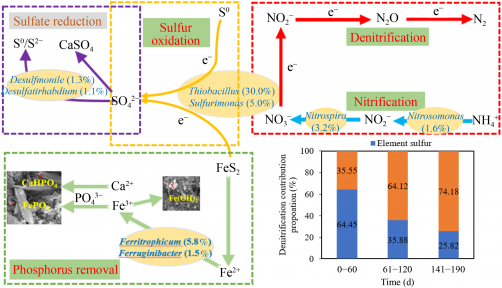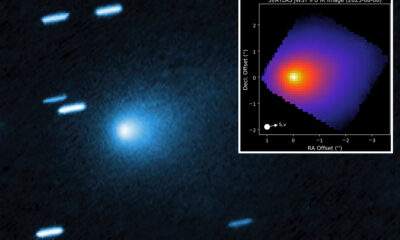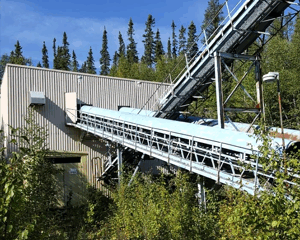Science
Researchers Explore Temperature Effects on Denitrification Reactors

Researchers from the China University of Mining and Technology have revealed significant findings regarding the impact of seasonal temperature shifts on a novel biological treatment method for municipal wastewater. Their study, titled “Insights into seasonal temperature shifts on a robust composite-substrate autotrophic denitrification reactor for treating municipal secondary effluent,” is published in Frontiers of Environmental Science & Engineering, Volume 19, Issue 6.
The study investigates sulfur autotrophic denitrification (SAD), a promising technology for nitrogen removal that does not produce carbon dioxide emissions. Despite the potential of SAD, the influence of fluctuating seasonal temperatures on its effectiveness—particularly when treating real municipal secondary effluent—has not been thoroughly understood until now.
To address this gap, the researchers developed a composite substrate SAD reactor, referred to as the SPSAD reactor, which combines elemental sulfur and pyrite in a specific ratio. This innovative setup, utilizing hollow plastic balls as filler, was evaluated over a period of 190 days under varying temperature conditions.
The results revealed a notable decline in the reactor’s performance as temperatures dropped. When the temperature fell from 35 °C to 9 °C, the nitrate removal loading decreased from 0.060 kg NO3−-N/(m3·d) to 0.032 kg NO3−-N/(m3·d). Similarly, the nitrate removal efficiency dropped from 93.2% to 49.9%, alongside a reduction in the removal rate of phosphate, which fell from 67.9% to 30.2%.
The study highlighted a significant shift in the electron donor used for denitrification as temperatures decreased. The ratio of ΔSO42− to ΔNO3−-N decreased from 6.48 to 5.34, indicating a transition from elemental sulfur to pyrite as the primary electron donor.
Microbial analyses showed that the dominant microbial phylum in the reactor was Proteobacteria, with an average abundance of 53.11%. The genus Thiabacillus, identified as critical for denitrification, experienced a decline in abundance from 33.2% at warmer stages (25–35 °C) to 26.4% in cooler stages (9–11 °C).
The findings provide valuable insights into the feasibility of using the SPSAD reactor for effective nitrogen and phosphate removal in municipal wastewater treatment, particularly in colder climates. The research offers crucial scientific support for stakeholders involved in the deep treatment of municipal secondary effluent.
For those interested in further details, the full study is available at: https://journal.hep.com.cn/fese/EN/10.1007/s11783-025-2002-y.
-

 Science1 month ago
Science1 month agoUniversity of Hawaiʻi Leads $25M AI Project to Monitor Natural Disasters
-

 Science2 months ago
Science2 months agoInterstellar Object 3I/ATLAS Emits Unique Metal Alloy, Says Scientist
-

 Science2 months ago
Science2 months agoResearchers Achieve Fastest Genome Sequencing in Under Four Hours
-

 Business2 months ago
Business2 months agoIconic Sand Dollar Social Club Listed for $3 Million in Folly Beach
-

 Politics2 months ago
Politics2 months agoAfghan Refugee Detained by ICE After Asylum Hearing in New York
-

 Business2 months ago
Business2 months agoMcEwen Inc. Secures Tartan Lake Gold Mine Through Acquisition
-

 Health2 months ago
Health2 months agoPeptilogics Secures $78 Million to Combat Prosthetic Joint Infections
-

 Lifestyle2 months ago
Lifestyle2 months agoJump for Good: San Clemente Pier Fundraiser Allows Legal Leaps
-

 Science2 months ago
Science2 months agoMars Observed: Detailed Imaging Reveals Dust Avalanche Dynamics
-

 Health2 months ago
Health2 months agoResearcher Uncovers Zika Virus Pathway to Placenta Using Nanotubes
-

 Entertainment2 months ago
Entertainment2 months agoJennifer Lopez Addresses A-Rod Split in Candid Interview
-

 World2 months ago
World2 months agoUS Passport Ranks Drop Out of Top 10 for First Time Ever








